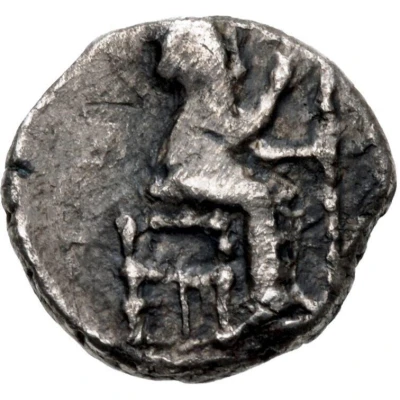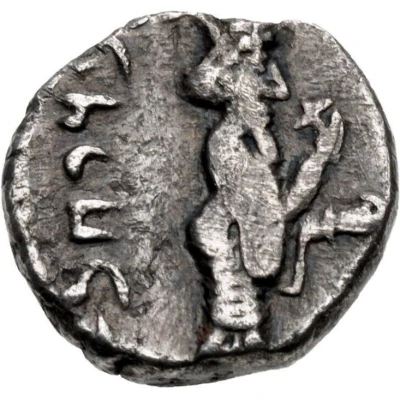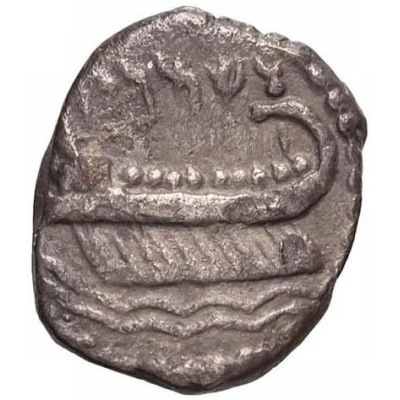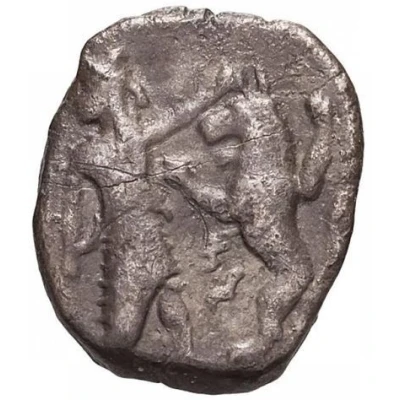


© Classical Numismatic Group, Inc.
Ma'ah-Obol - Bdyehibel Samaria 375 BC - 333 BC
| Silver | 0.61 g | 9 mm |
| Issuer | Satrapy of Samaria (Achaemenid Satrapies) |
|---|---|
| Type | Standard circulation coin |
| Years | 375 BC - 333 BC |
| Value | 1 Ma'ah-Obol = 1⁄24 Shekel |
| Currency | Shekel (539-332 BCE) |
| Composition | Silver |
| Weight | 0.61 g |
| Diameter | 9 mm |
| Shape | Round (irregular) |
| Technique | Hammered |
| Orientation | Variable alignment ↺ |
| Demonetized | Yes |
| Updated | 2024-10-10 |
| Numista | N#98603 |
|---|---|
| Rarity index | 97% |
Reverse
Bearded male standing right wearing kidaris, sniffing flower and holding another flower in left hand
Lettering: בדיחבל
Translation: Bdyehibel
Comment
Meshorer & Qedar 13; Sofaer 89–90; Hendin 6033.
The name Bdyehibel appears on several coins, but it is not yet fully understood or related to a person.
David Hendin Guide to Biblical Coins Fifth Edition, p 108
Interesting fact
One interesting fact about the Ma'ah-Obol - Bdyehibel (Samaria) coin is that it features a unique blend of ancient Near Eastern iconography and Greek influences, reflecting the cultural exchange and fusion that occurred during the Achaemenid period. The coin's obverse depicts a bearded king in a Persian-style crown, while the reverse shows a lion attacking a stag, a common motif in ancient Greek coinage. This blending of styles and themes highlights the cultural diversity and exchange that characterized the Achaemenid Empire, which spanned from the Indus River to Thrace and was home to many different ethnic and linguistic groups.

